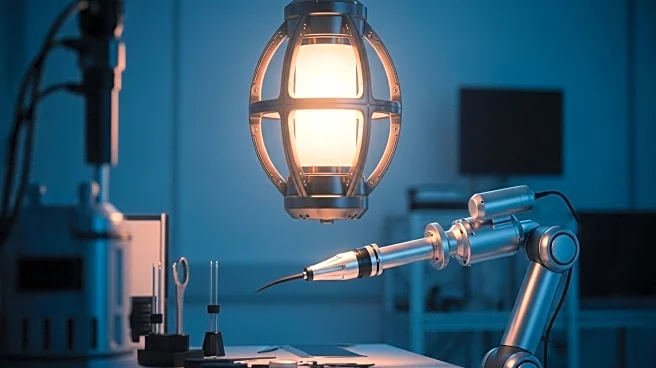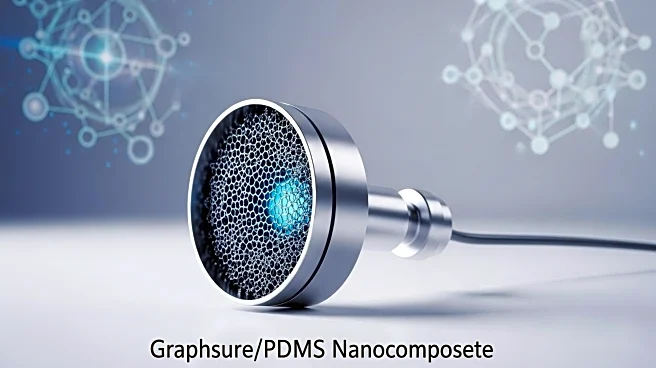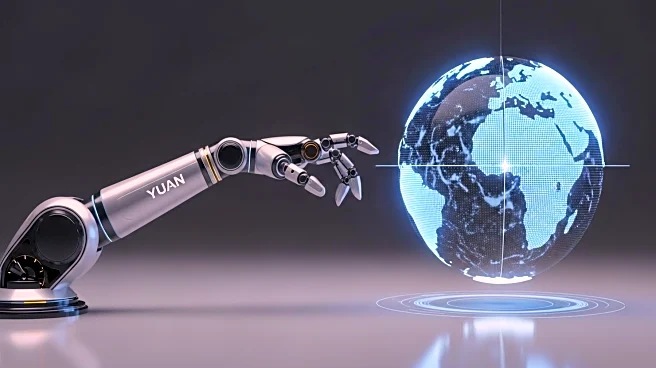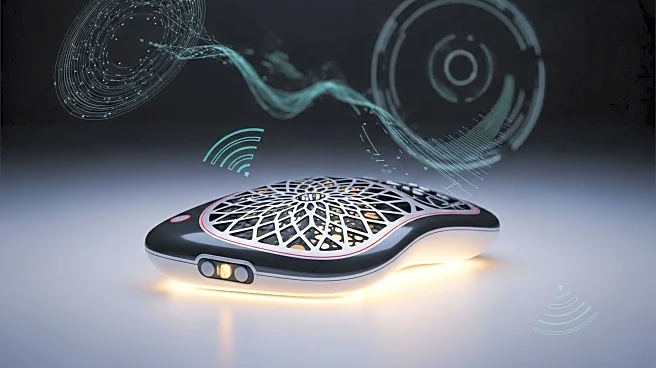What is the story about?
What's Happening?
Researchers at North Carolina State University have developed a polymer structure resembling a 'Chinese lantern' that can transform into multiple three-dimensional shapes when compressed or twisted. This transformation is remotely controlled using a magnetic field, offering potential for various practical applications. The lantern is constructed from a thin polymer sheet cut into a diamond-shaped parallelogram, with evenly spaced lines forming parallel ribbons connected by solid strips. The structure is bistable, meaning it can snap between two stable forms—a lantern shape and a spinning-top shape—by compressing or twisting. The addition of a magnetic film allows remote manipulation, enabling uses such as a gentle magnetic gripper, a flow-control filter, and a compact shape that extends upward.
Why It's Important?
The development of this magnetic lantern represents a significant advancement in shape-morphing mechanical metamaterials and robotics. Its ability to change forms and be controlled remotely opens up possibilities for applications in various fields, including biomedical devices, environmental monitoring, and robotics. The lantern's multistable nature allows for energy storage and release, which can be harnessed for tasks requiring precision and control. This innovation could lead to more efficient and adaptable tools in industries that require delicate handling or dynamic structural changes.
What's Next?
The research team plans to explore the assembly of these lantern units into two-dimensional and three-dimensional architectures for broader applications. This could lead to the development of advanced mechanical metamaterials and robotic systems with enhanced capabilities. The mathematical model created by the team will aid in programming desired shapes and stability, further expanding the potential uses of this technology. Future research may focus on optimizing the design for specific applications and integrating the lanterns into complex systems.
Beyond the Headlines
The ethical implications of this technology include considerations of its use in sensitive environments, such as wildlife conservation, where the magnetic gripper could minimize harm to animals. Additionally, the ability to remotely control structures could lead to advancements in remote sensing and monitoring, providing new tools for environmental protection and disaster response. The long-term impact of this technology may include shifts in manufacturing processes, where adaptable materials reduce waste and improve efficiency.
AI Generated Content
Do you find this article useful?













